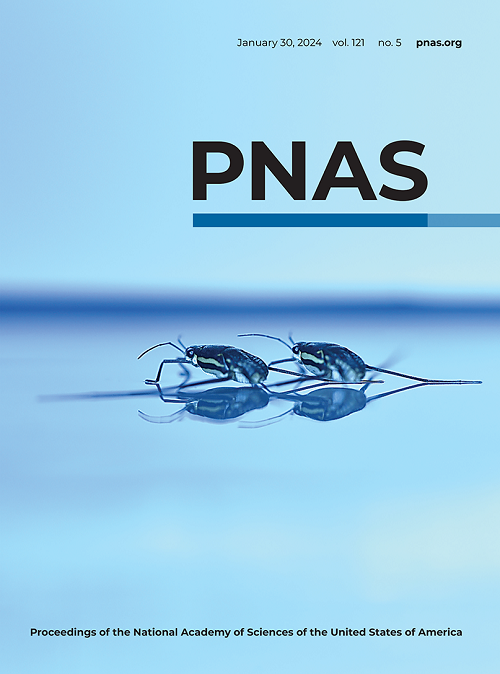Synthesizing ordered polar patterns in nonpolar SrTiO 3 nanofilms via wrinkle-induced flexoelectricity
IF 9.1
1区 综合性期刊
Q1 MULTIDISCIPLINARY SCIENCES
Proceedings of the National Academy of Sciences of the United States of America
Pub Date : 2024-11-26
DOI:10.1073/pnas.2414500121
引用次数: 0
Abstract
Ordered polar structures in oxide nanofilms play a pivotal role in the development of nanoelectronic applications. Hitherto, ordered polar structures have been restricted to a limited number of ferroelectric materials, and there is no effective scheme to induce and manipulate ordered polar patterns in centrosymmetric nonpolar nanofilms due to the absence of spontaneous symmetry breaking. Here, we circumvent these limitations by utilizing the wrinkle-induced strain gradient modulation associated with flexoelectricity as a general means of inducing and manipulating ordered polar patterns in nonpolar nanofilms. Leveraging the surface instability caused by strain mismatch between oxide nanofilms and pre-strained compliant substrate, we successfully fabricate striped SrTiO通过皱纹诱导的柔电性在非极性 SrTiO 3 纳米薄膜中合成有序极性图案
氧化物纳米薄膜中的有序极性结构在纳米电子应用的发展中起着举足轻重的作用。迄今为止,有序极性结构仅限于数量有限的铁电材料,而且由于缺乏自发的对称性破坏,在中心对称非极性纳米薄膜中没有有效的方案来诱导和操纵有序极性模式。在这里,我们利用与挠电性相关的皱纹诱导应变梯度调制作为诱导和操纵非极性纳米薄膜中有序极性图案的一般方法,从而规避了这些限制。利用氧化物纳米薄膜和预应变顺应基底之间的应变不匹配所造成的表面不稳定性,我们成功地制造出了条纹状的 SrTiO 3 皱纹,在这种皱纹中,很容易实现有序的应变梯度和相应的周期性极性图案。通过原位压电响应力显微镜实验,我们发现生成的极性图案可以通过改变应变边界来操控。此外,原子分辨率图像和第一原理计算显示,这种皱纹诱导的有序极性图案主要来自局部极化和应变梯度之间的柔电耦合。这些发现为通过应变梯度和挠电工程操纵极性结构提供了启示,进而能够在更广泛的材料中实现非难极性结构。
本文章由计算机程序翻译,如有差异,请以英文原文为准。
求助全文
约1分钟内获得全文
求助全文
来源期刊
CiteScore
19.00
自引率
0.90%
发文量
3575
审稿时长
2.5 months
期刊介绍:
The Proceedings of the National Academy of Sciences (PNAS), a peer-reviewed journal of the National Academy of Sciences (NAS), serves as an authoritative source for high-impact, original research across the biological, physical, and social sciences. With a global scope, the journal welcomes submissions from researchers worldwide, making it an inclusive platform for advancing scientific knowledge.

 求助内容:
求助内容: 应助结果提醒方式:
应助结果提醒方式:


